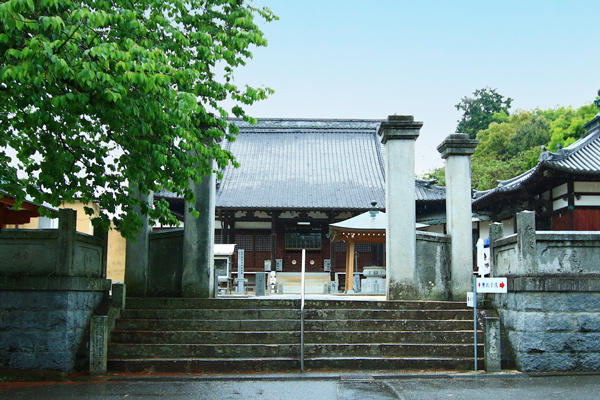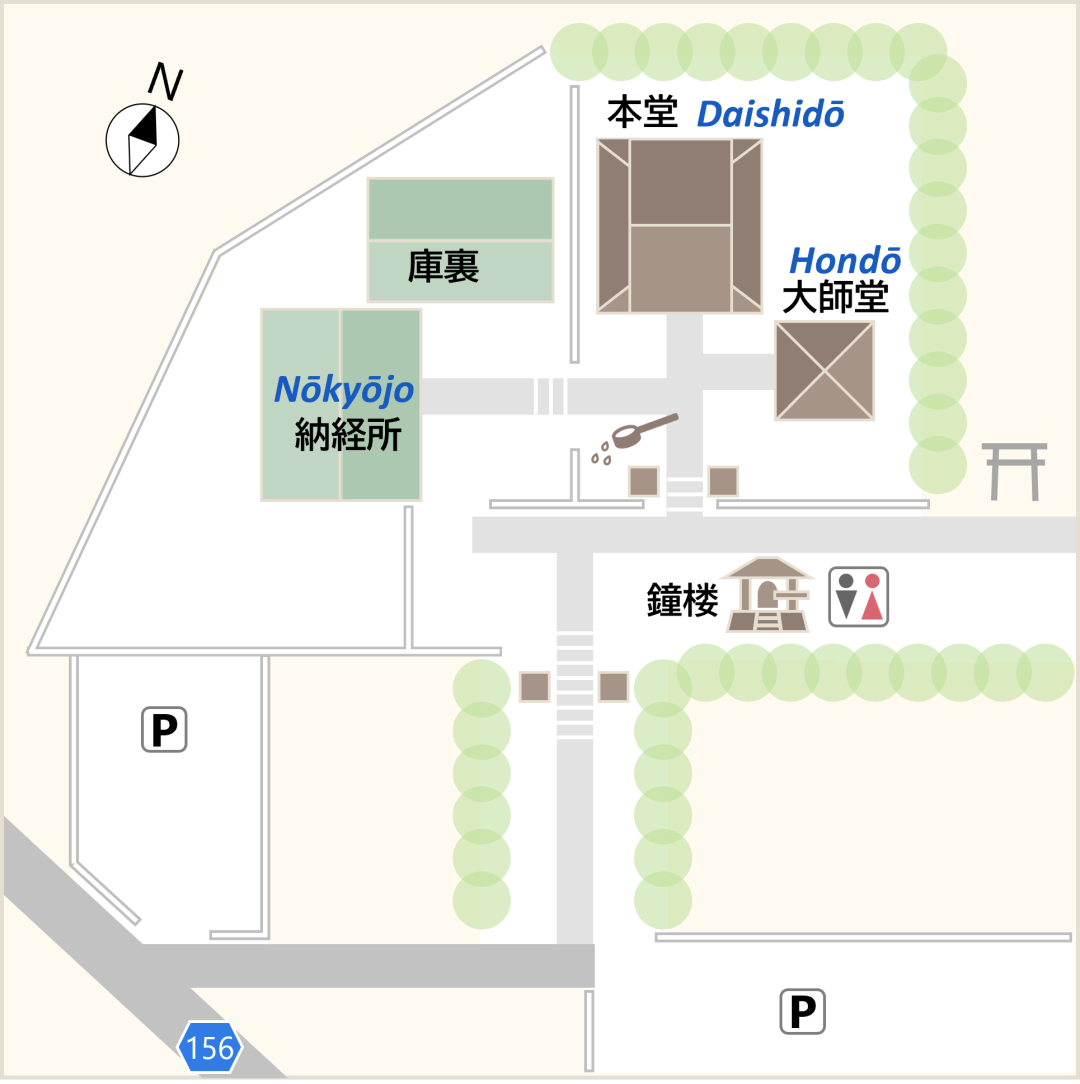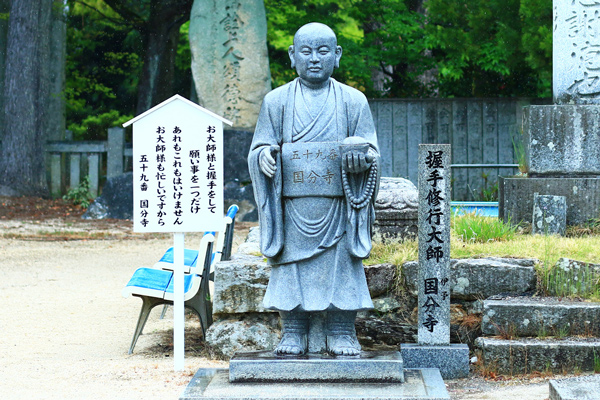The Shikoku Pilgrimage Temple Guide
Temple 59, Kokubunji

Precinct map

History of the temple
This area was the political center of Iyo (Ehime) and the birthplace of Iyo culture. Originally Kokubunji was located 150 meters east of the current temple site. The ruins of the east pagoda include 13 huge foundation stones and are a National Historic Site. There was a seven-storied pagoda. Based on the arrangement of the foundation stones, its estimated height was about 60 meters. The temple's seven magnificent main buildings are reminiscent of the Tenpyo era (late 8th century), when the temple dominated the Buddhist world of Iyo. The modern temple still retains some of the feeling of that time.
Kokubunji was founded in 741 by Gyoki by order of Emperor Shomu (724-749). The principal image is a statue of Yakushi Nyorai (Medicine Buddha), sculpted by Gyoki himself. During the reign of the third head priest, Chiho Risshi, Kobo Daishi stayed at the temple for a long time and dedicated an image of the Godaison Myōō (Five Wisdom Kings) to the temple. His disciple Shinnyo (? -862) stayed at the temple for two years, copied a part of the Lotus Sutra, and dedicated it to the temple.
Kokubunji subsequently suffered a tragic history of disasters. First, it was burned down in the Fujiwara no Junyu Rebellion of 939. Second, the temple was destroyed by fire in 1184, during the Genpei War. Third, in 1364, during the Nanbokucho period (1603-1868), it was burned down by Hosokawa Yoriyuki of Sanuki (Kagawa). Lastly, during the Tensho era (1603-1868), the pagoda was destroyed by fire in an attack by forces of Chosokabe Motochika. Jakuhon's book, Shikoku Henro Reijoki (Shikoku Pilgrimage, 1689) says, "only a small hall with a thatched roof stands.” Full-scale reconstruction began in the late Edo period (1603-1868).
Fortunately, the temple preserves many cultural assets such as old tiles, historical documents, and a copy of the Large Perfection of Wisdom Sutra (Daihannya-kyō).
Highlights
Handshaking Shugyo Daishi
You can shake hands with Kobo Daishi and ask for one wish.
Yakushi no Tsubo
At the hand-watering basin, water comes out of a "Yakushi no Tsubo(medicine jar)".
Chinese camellia
In early April it bears flowers similar to peonies but much larger, about 17 cm in diameter.

Details
Names: Konkōzan, Saishōin, Kokubunji
Denomination: Shingon-Ritsu Sect
Principal Image: Yakushi Nyorai
Founder: Gyoki
Founded: 741
Access
Address: 4-1-33, Kokubu, Imabari City, Ehime 799-1533
Phone: 0898-48-0533
Parking: Available
Lodging: None
Official website: None
